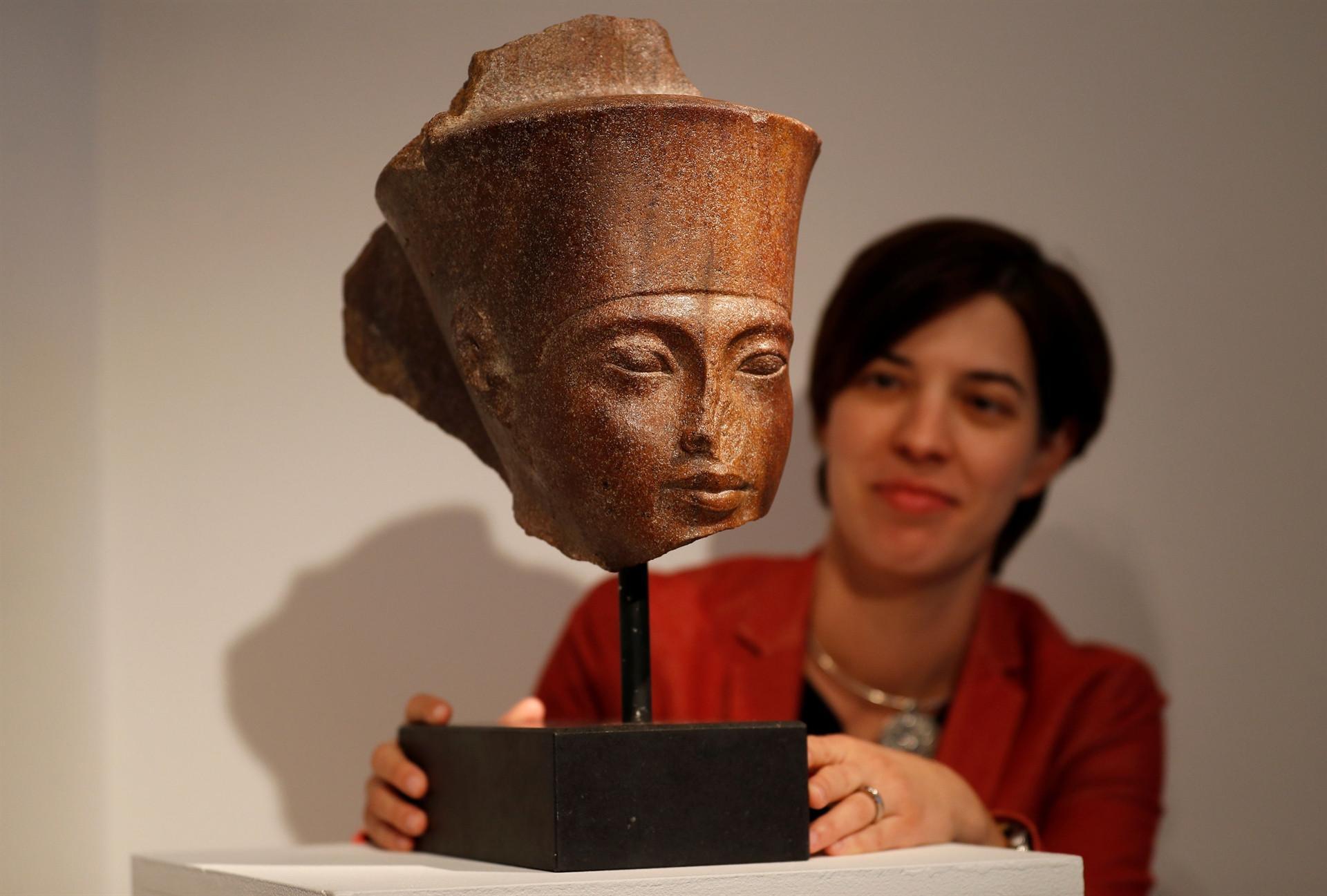
A 3,000-year-old quartzite head of Egyptian "Boy King" Tutankhamun was auctioned off for $6 million July 4 in London despite a fierce outcry from Cairo.
Christie's auction house sold the 28.5-centimeter relic for $5,970,000 at one of its most controversial auctions in years.
No information about the buyer was disclosed.
The famous pharaoh's finely-chiseled face -- its calm eyes and puffed lips emoting a sense of eternal peace -- came from the private Resandro Collection of ancient art that Christie's last parceled off for 3 million in 2016.
But angry Egyptian officials wanted the sale halted and the treasure returned.
About a dozen protesters waved Egyptian flags and held up signs reading "stop trading in smuggled antiquities" outside the British auction house's London sales room.
"This should not be kept at home. It should be in a museum," Egyptian national Magda Sakr said. "It is history. It is one of our most famous kings," the 50-year-old said.
Egypt's antiquities ministry said it would hold a special meeting at the start of next week to discuss its next steps in the standoff.
"The Egyptian government will take all the necessary measures to recover Egyptian antiquities that left Egypt illegally," it said in statement.
Former Egyptian antiquities minister Zahi Hawass said that the piece appeared to have been "stolen" in the 1970s from the Karnak Temple complex just north of Luxor.
"We think it left Egypt after 1970 because in that time other artefacts were stolen from Karnak Temple," Hawass said.
The Egyptian foreign ministry had asked the UK Foreign Office and the UN cultural body UNSECO to step in and halt the sale.
But such interventions are rare and made only when there is clear evidence of the item's legitimate acquisition by the seller being in dispute.
Christie's argued that Egypt had never before expressed the same level of concern about an item whose existence has been "well known and exhibited publicly" for many years. "The object is not, and has not been, the subject of an investigation," Christie's said.
The auction house has published a chronology of how the relic changed hands between European art dealers over the past 50 years.
Its oldest attribution from 1973-74 places it in the collection of Prince Wilhelm of Thurn and Taxi in modern-day Germany.
This account's veracity was called into doubt by a report from the Live Science news site last month suggesting that Wilhelm never owned the piece.
Wilhelm was "not a very art-interested person," his niece Daria told the news site.